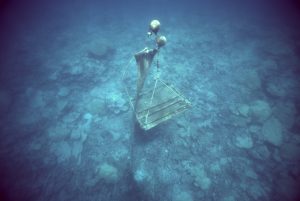Drifting Fishing Gear Poses Significant Risks to Marine Protected Areas
Researchers hope their findings will help managers mitigate the impacts of drifting fishing gear in protected areas
Marine Protected Areas (MPAs) protect biodiversity within their boundaries by regulating fishing. However, the impacts of drifting fishing gear, especially drifting fish aggregation devices (dFADs), are not necessarily taken into account.
Now, a team of scientists led by David Curnick from the Zoological Society of London, UK, has shown the potential harm that dFADs could cause to MPAs. Their study, published in the journal Conservation Biology, found more than a third of dFADs posed a risk to biodiversity in the Chagos Archipelago MPA.
dFADs are floating platforms that attract tuna fish in particular, causing them to accumulate around the devices, making them easier to catch. More than 100,000 dFADs are deployed every year, but they have drawbacks including depleting tuna stocks and catching excessive juveniles and bycatch, such as sharks. They can also be lost and abandoned, becoming marine pollution and stranding in sensitive areas or tangling marine animals, such as turtles, in their trailing nets.

A cause for considerable management concern
Using the MPA surrounding the islands and atolls of the Chagos Archipelago as a case study, Curnick and his colleagues modelled the transit of dFADs through the region from 16 different entry points. The devices’ movement was modelled across months and years to account for changing prevailing currents.
The researchers found that over a third (37.5%) of dFADs that drift into the MPA pose a considerable management concern by either beaching on sensitive habitats, such as coral reefs, or drifting through and accumulating fish that could then be exported outside the MPA and into fishable areas.
“The interactions between static MPAs and drifting fishing gears have long been overlooked. However, if left unchecked, we find that drifting fish aggregation devices could reduce the effectiveness of MPAs,” says Curnick. “As such, we need to ensure that MPA managers and stakeholders account for the possible impacts of drifting fishing gears and mitigate against them when required.”
The highest risk of dFADs beaching or remaining in the MPA for longer periods came from those entering the MPA from the east and west. The largest atoll in the region, the Great Chagos Bank, was the most likely to be affected by beaching.
Interdisciplinary approach helped to boost the study’s impact
Curnick says the interdisciplinarity of the project team helped the study succeed. “This project brought together academics, conservationists and fisheries scientists, generously supported by the Bertarelli Foundation,” he says. “By incorporating each other’s expertise and insights, we have produced a more holistic and impactful assessment of the risk posed by dFADs which we hope will lead to a review of their management around the Chagos Archipelago.”
And the approach is designed to be replicable in other MPAs and territories: “We hope the paper will provide a useful reference for others seeking to address the impacts of drifting fishing gears in their waters,” Curnick concludes.
Article details:
David J. Curnick, David A. Feary, and Geórgenes H. Cavalcante (2020)“Risks to large marine protected areas posed by drifting fish aggregation devices,” Conservation Biology
